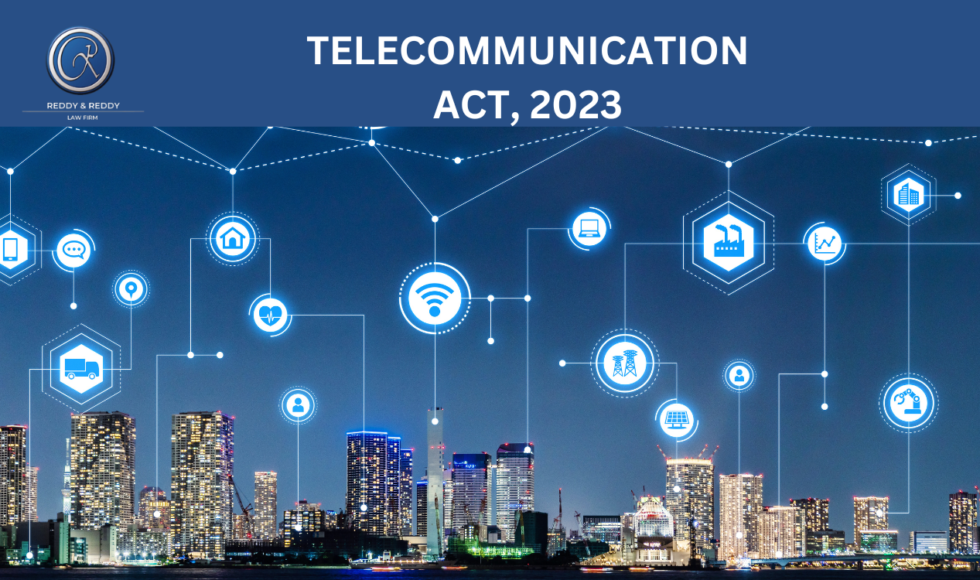India’s telecommunications landscape is on the cusp of a revolution, thanks to the game-changing Telecommunications Act of 2023. This forward-looking legislation, bidding farewell to the outdated Telegraph Act of 1885 and the Wireless Telegraphy Act of 1933, is laying the groundwork for a futuristic telecom infrastructure that promises to redefine how we communicate in the nation.
Spectrum Unveiled: Breaking Free from Bureaucracy
Spectrum are the invisible radio waves used for wireless connection. The right allocation of spectrum is a critical aspect of the growing wireless world. The Act brings newfound clarity and fairness, replacing the bureaucratic maze with transparent auctions. This not only levels the playing field but also encourages healthy competition and innovation, with exceptions carved out for entities like defence and public broadcasters, the overarching principle of transparent auctions stand firm in the Act.
Licensing Revolution: Simplifying for Innovation
The Act ditches the complexity of a multi-layered licensing system, condensing permits into three clear categories: network establishment, service provision, and equipment possession. This simplification allows the Telecom Regulatory Authority of India (TRAI) to focus on its core mission – protecting consumer rights, regulating tariffs, and ensuring service quality. The result of which is a streamlined system ready for innovation and growth.
Empowering Consumers: Taking Control
Consumer is the king and this Act gives consumer protection the centre stage, granting users the power to choose. The right to opt out of unsolicited messages and register on a “Do Not Disturb” list gives consumers control. Strict penalties for spam and privacy violations serve as a deterrent, putting the reins firmly in the hands of users. This will enable the consumers to swiftly manage and restrict the unsolicited calls and messages.
Security and Surveillance: Balancing Act
The provisions and unclear rules surrounding security and surveillance haunted the previous acts. The Act dispels security and surveillance’s ambiguity, introducing clarity and accountability. Lawful interception of communication is allowed under specific circumstances, ensuring national security and public order. Robust cybersecurity measures further fortify security, with stringent legal safeguards protecting personal privacy.
Continuity amidst Change: Navigating the Transition
As India transitions to the new framework, continuity is key. Existing operators have the option to seamlessly migrate, ensuring a smooth transition. However, success hinges on robust regulations and effective implementation, unlocking the Act’s full potential and paving the way for a vibrant telecommunications ecosystem.
India’s Telecommunications Renaissance
The Telecommunications Act of 2023 marks progress, ushering in a new era of communication in India. This transformative legislation sets the stage for a future defined by competitive markets, innovation, and unwavering consumer protection. Challenges exist, but the Act’s potential to propel India into a golden age of telecommunications is undeniable. The journey has just begun, and the road ahead promises to be one of remarkable transformation, rewriting the narrative of communication in India.
Beyond the Text: Envisioning the Future
The impact of the Telecommunication Act of 2023 extends beyond legal jargon. Picture rural villages buzzing with high-speed internet, connecting farmers and students globally. Imagine tech hubs thriving on innovation, fuelled by the Act’s infrastructure. Envision telemedicine reaching remote corners, and bridging healthcare gaps. These glimpses showcase the transformative potential unleashed by this groundbreaking legislation.
Challenges and Roadblocks: Navigating the Journey
While the Act promises a bright future, challenges loom. Effective implementation requires addressing regulatory loopholes and establishing mechanisms for dispute resolution. Balancing security and privacy demands transparent safeguards. Bridging the digital divide in rural areas mandates targeted infrastructure development and digital literacy initiatives. Success calls for concerted efforts from policymakers, industry players, and civil society.
In conclusion, the Telecommunications Act of 2023 is more than legislation; it’s an opportunity to shape a new future together. Success depends on government policies, corporate ventures, and active citizen participation. As we embrace the Act’s opportunities, let’s do so inclusively, and collaboratively, envisioning a future where technology connects us all, fostering a more equitable and vibrant India.

